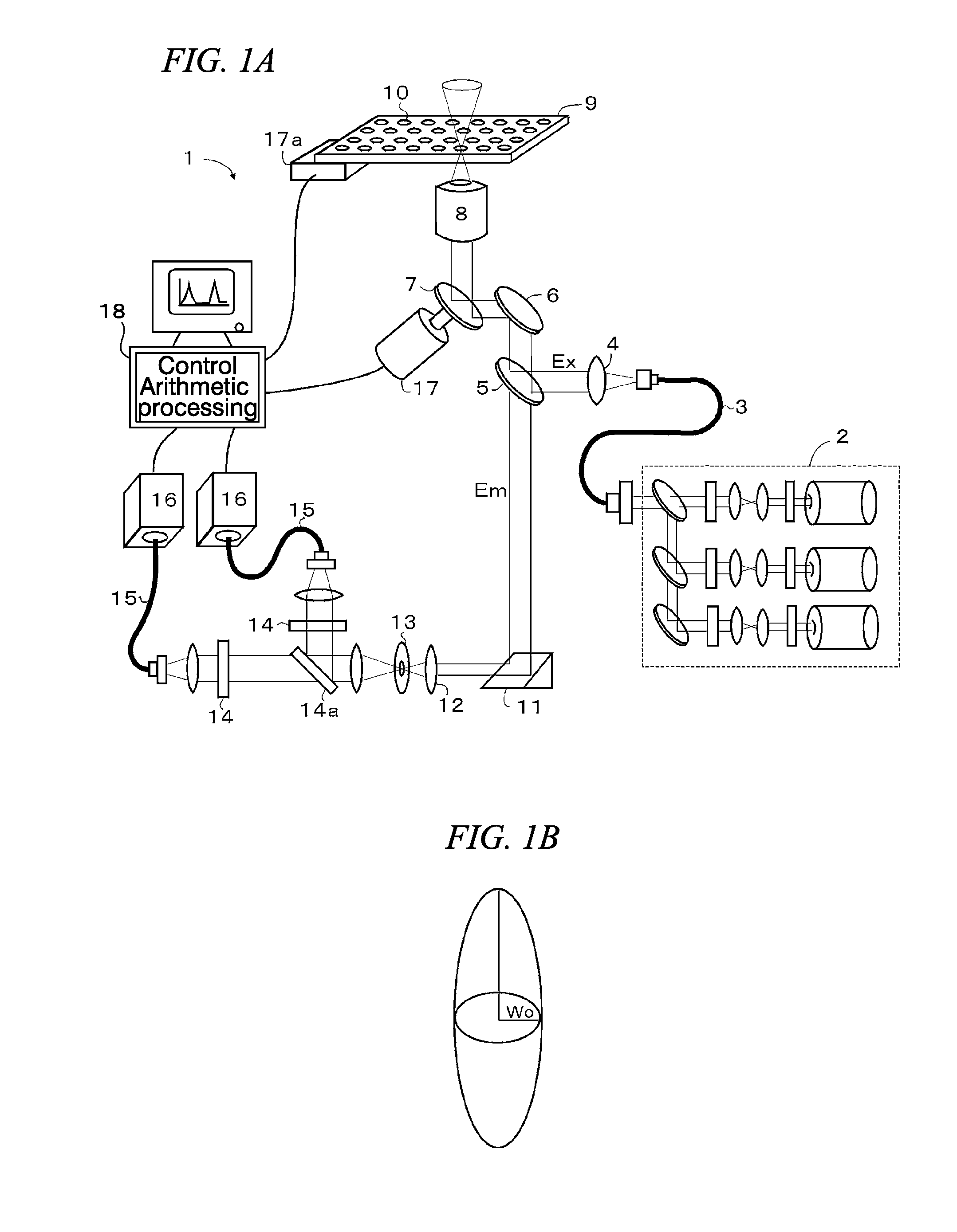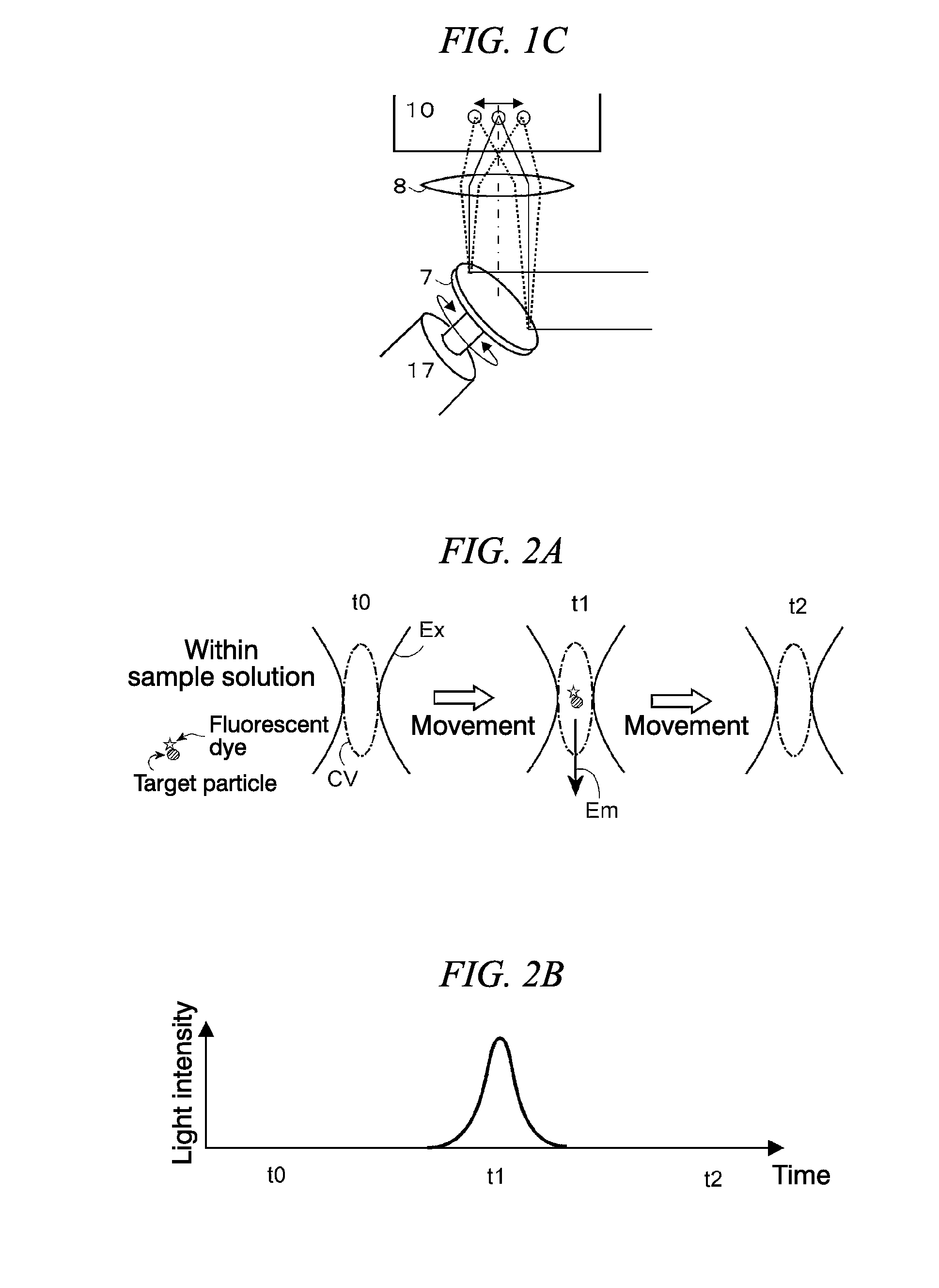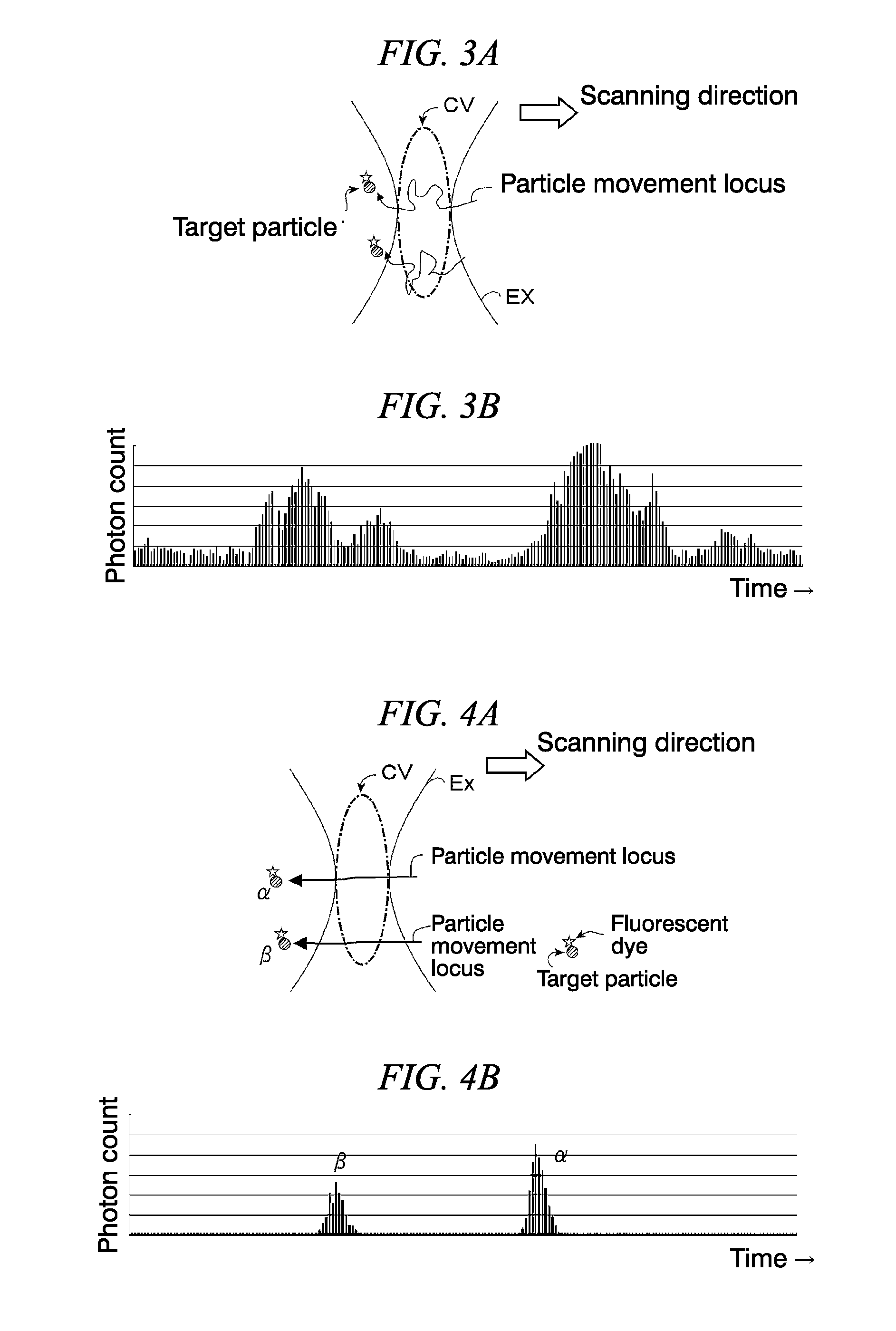Method for detecting a target particle in biosample containing pancreatic juice
- Summary
- Abstract
- Description
- Claims
- Application Information
AI Technical Summary
Benefits of technology
Problems solved by technology
Method used
Image
Examples
reference example 1
[0114]Autofluorescent substances existing in duodenal juice collected from three examinees were measured with a detection wavelength by the scanning molecule counting method.
[0115]Of the three duodenal juice specimens used herein, one showed a pink color, another one showed a relatively strong yellow color, and the remaining one showed a very weak yellow color. Considering the difference in colors, these duodenal juice specimens were suggested to be largely different in types and amounts of autofluorescent substances contained therein.
[0116]10 μL of each duodenal juice specimen was diluted 10-fold with Tris buffer (10 mM Tris-HCl, 1 mM EDTA, 400 mM NaCl, and pH 8.0), and this diluted solution was used as a sample solution. Each sample solution was measured with excitation light from 488 nm to 670 nm by the scanning molecule counting method. Moreover, Tris buffer, used as a reference, was also measured in the same manner by the scanning molecule counting method.
[0117]Concretely, in t...
example 1
[0120]Samples made by adding single stranded nucleic acid molecules as the target particles to the three duodenal juice specimens used in Reference Example 1 were adopted as the biosample containing pancreatic juice to be subjected to the method for detecting a target particle of the present invention.
[0121]A single stranded nucleic acid molecule consisting of a base sequence represented by the SEQ NO: 1 was used as the target particle. Hereinunder, in this Example, this nucleic acid is referred to as the target nucleic acid. Moreover, a molecular beacon probe 1 prepared by adding TAMRA (registered trademark) to the 5′-end and BHQ-2 to the 3′-end of an oligonucleotide consisting of the base sequence represented by the SEQ NO: 2, or a molecular beacon probe 2 prepared by adding ATTO (registered trademark) 647N to the 5′-end and BHQ-2 to the 3′-end of an oligonucleotide consisting of the base sequence represented by the SEQ NO: 2, was used as the luminescent probe to be bound to this ...
PUM
| Property | Measurement | Unit |
|---|---|---|
| Wavelength | aaaaa | aaaaa |
| Wavelength | aaaaa | aaaaa |
| Wavelength | aaaaa | aaaaa |
Abstract
Description
Claims
Application Information
 Login to View More
Login to View More - R&D
- Intellectual Property
- Life Sciences
- Materials
- Tech Scout
- Unparalleled Data Quality
- Higher Quality Content
- 60% Fewer Hallucinations
Browse by: Latest US Patents, China's latest patents, Technical Efficacy Thesaurus, Application Domain, Technology Topic, Popular Technical Reports.
© 2025 PatSnap. All rights reserved.Legal|Privacy policy|Modern Slavery Act Transparency Statement|Sitemap|About US| Contact US: help@patsnap.com



